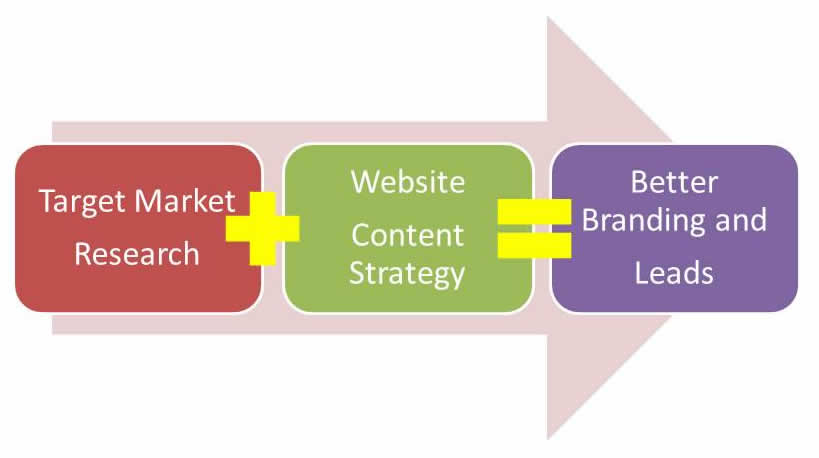Effective Website Design Needs Sales-Focused Content
It’s as simple as this: when designed with your sales cycle in mind, your website can help differentiate your company from competitors, accelerate a buyer’s decision-making process, and win more business.

However, your website could also work against you. If you’ve had the same website for years and feel it hasn’t helped generate revenues, you’re probably right. In fact, your website may be stifling your business’ growth potential if it displays dated images and information, looks neglected or abandoned and does not reflect who you really are.
First Impressions are Paramount
Old, inaccurate, and poor quality images, graphics, and creative copy are “bad for business”. Website content developed without a strategy in place takes up space but doesn’t pique a prospect’s interest or give them a compelling reason to work with your organization.
Mistakenly, many companies don’t think of website content as a means of attracting and keeping a visitor’s attention like they would an ad in a magazine. They don’t realize that strategically crafted website content could be a valuable sales asset that cultivates interest just as a salesperson would in face-to-face situations. Of all the touchpoints a company has with prospects, their website often ranks highest, and the content on that website, the images, text, and Calls To Action, start and lead the conversation with site visitors.
The most successful companies ensure their websites make a positive impression by leveraging compelling content to demonstrate how easy it is to do business with them, and why their products offer the greatest value. Even when companies sell big-ticket items with long sales cycles or compete in niche categories where “everybody knows them”, they recognize that every visit to their website gives them an opportunity to give potential buyers another reason to work with them. So each word, graphic, and interaction is created with the intent of making every visit a helpful, fulfilling, and positive experience.
Create Content That Increases Sales
As much care should be given to creating website content as to the way it is displayed and accessed. So a website design should account for content on each page as well as content available off page, in the form of downloads. This is important because up to 80% of first-time visitors are not ready to buy – they are in the information gathering stage interested in understanding their options and the differences between available alternatives. In this stage of their decision-making process, they would like to find answers to their questions easily on your site but are not ready to speak with sales or be contacted by a rep yet.
One effective user-centric website approach is to keep content on your website to a minimum, with just enough to tell your story and guide potential buyers to the next step in their decision cycle by easily finding what they need. To do so,
· Use lots of white space to make it easy for scanning the major points on each page with short paragraphs, bullet points, and subheadings.
· Populate pages with opportunities for greater detail using Call To Action Buttons, and content specific to a person’s interest.
Cross Their T’s ….
By minimizing and honing your content, your website will attract attention and interest, while its Call To Action buttons identifies and address special interests. This method avoids content clutter on your website and follows a “T” strategy – broad across with multiple “off-ramps” to dig deeper on the focused subject matter.
To develop a “T” content strategy as part of your website development plan, you first have to know the journey different prospects take to achieve their objectives. This insight could be gathered by developing a “journey map” for each buyer segment or persona. The journey map charts the major milestones, recurring objectives, and frequently asked questions your target audience considers before making a purchase or milestone buying decision. Ask your sales reps and select customers for their input so that you could chart a common path in print for their feedback and refinement.
Your findings will impact your overall website development strategy, your website’s navigation buttons, and labels, and how the website’s content is categorized in the navigational structure. If you find customers have multiple starting points, create multiple journey maps to accommodate the different onramps people take to your website to find their intended destination. Journey maps not only help in developing the best content architecture for a website but also provides a new and clear perspective never seen before that could be used by sales and marketing to win more business across all your touchpoints.
While you can’t please everyone with your brand or your website design, to increase sales from your website, you need to understand how to speak directly to buyer groups that visit your site using content that resonates with them in a way they find most helpful. Your success will be visible in an uptick in conversion rates, higher win rates, and a stronger brand reputation.
